Here's Who Made Gartner's First-Ever Magic Quadrant For Unified Endpoint Management Tools
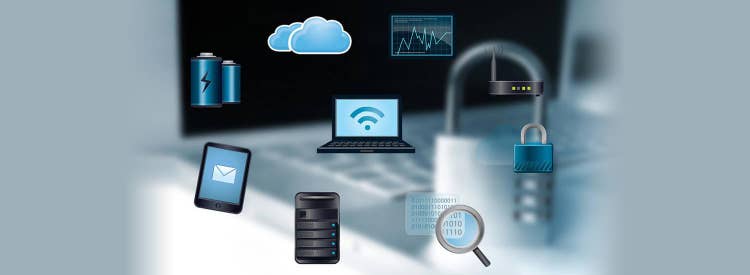
First-Ever UEM Magic Quadrant
Gartner ranks a total of 14 vendors in its first-ever Magic Quadrant for unified endpoint management (UEM) tools, referring to a new class of products that can act as a single management interface for mobile, PC, wearable and Internet of Things devices.
The IT research firm said businesses will replace enterprise mobility and client management tools with UEM tools to support modern operating systems. These products combine the management of multiple endpoint types in a single console to configure, manage and monitor iOS, Android, Windows 10, macOS and IoT and wearable endpoints. The offerings act as a coordination point to orchestrate the activities of endpoint technologies such as identity services and security infrastructure. Gartner expects wearables and IoT management to become more central to the UEM market in the future.

Unified Endpoint Management Research Methodology
Vendors in Gartner's analysis fall into two categories: companies that have invested in mobile and modern management with little client management tool (CMT) functionality and those that have integrated an existing CMT or built CMT features into their UEM tool. To make Gartner's 2018 Magic Quadrant, products must contain elements around enterprise mobility management, modern management of PCs, some capabilities around CMT integration and IoT management, as well as having a user base of at least 50,000 total active licenses and $10 million in revenue from UEM products.
Gartner's Magic Quadrant ranks vendors on their ability to execute and completeness of vision and places them in four categories: Niche Players (low on vision and execution), Visionaries (good vision but low execution), Challengers (good execution but low vision) and Leaders (excelling in both vision and execution).
Here are the 14 vendors that made Gartner's unified endpoint managementtools Magic Quadrant, along with Gartner's assessments of each company's strengths and weaknesses in the space.
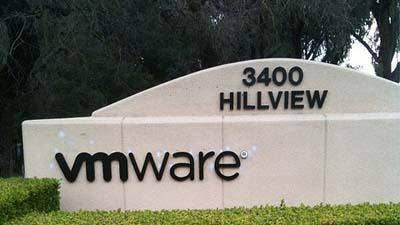
Leader: VMware
VMware took home the gold in both execution and vision on the Magic Quadrant, besting the 13 other vendors in Gartner's two core ranking segments. The Palo Alto, Calif.-based virtualization leader completed the transition of its AirWatch product family this year, creating the Workspace ONE brand of UEM offerings and retiring legacy color-tiered licensing under the AirWatch brand. VMware's Workspace ONE Intelligence is based on technology acquired through Apteligent, which provides detailed analytics across multiple endpoint types, users and identities, apps and networks. VMware is investing in technologies to improve management of mobile, wearables, IoT devices and PCs, as well as serving single-purpose or purpose-built Android devices.
Strengths: VMware makes bold investments in microservices, analytics and offering components that increase integration and functionality for its Boxer solution, said Gartner. VMware is also successful in building CMT integration technology and providing customer migration support from CMT to UEM.
Weaknesses: The company's focus on helping customers migrate from CMT to UEM with its own tools creates direct competition with Microsoft, whose packaging and licensing could drive down the average selling price and revenue of VMware's UEM product.

Leader: Microsoft
Closely behind VMware is Microsoft, which Gartner ranks as the No. 2 vendor in both execution and vision on the Magic Quadrant. Microsoft's Enterprise Mobility + Security (EMS) suite is the foundation of its UEM strategy. The Redmond, Wash.-based software giant introduced integration and migration capabilities between Microsoft System Center Configuration Manager and Microsoft Intune, which customers can buy stand-alone or as part of EMS included in some Microsoft enterprise licensing agreements. The company released Intune APIs for Microsoft Graph this year, exposing much of Intune's functionality as services for programmatic access by Microsoft and third-party tools.
Strengths: Enterprisecustomers with Microsoft 365 find that extensive integration across products creates capabilities that are difficult to replicate piecemeal. There is full integration with Office 365 mobile applications, with Intune required for implementing application-level access to full data loss prevention controls.
Weaknesses: Incomplete support for legacy Android versions may create management issues in certain environments. Intune lacks full support for integration with some popular identity management products like Ping Identity and Okta.
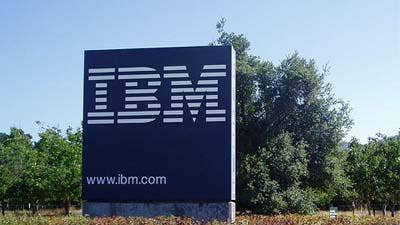
Leader: IBM
IBM's mobility management offering, MaaS360, has added CMT functions from the company's BigFix product to create a complete UEM offering. The Armonk, N.Y.-based company has leveraged its software portfolio to combine MaaS360 with IBM products in areas such as mobile threat detection, cloud access security broker, and identity and access management. In addition, IBM uses its Watson AI to provide analytics designed to help customers identify and triage issues with devices managed by MaaS360. The company continues to shift from mobility management toward a UEM strategy to help customers transition from legacy to modern client management. IBM ranks No. 3 in both execution and vision on the Magic Quadrant.
Strengths: IBM offers advanced predictive analytics using its Watson engine to analyze UEM data to predict problems or security events. Gartner said customers report that MaaS360 is easier to implement compared with other UEM offerings.
Weaknesses: MaaS360 is Software-as-a-Service (SaaS) only. It doesn't provide an on-premises management option or offer an on-premises access gateway for email and other applications. Gartner said customers also complained about support issues centered around IBM's help desk ticket system.

Leader: BlackBerry
BlackBerry's UEM 12.8 builds on the strengths of the company's multiple acquisitions and investments in recent years around mobility management. Recent developments include its Enterprise Bridge product that unifies BlackBerry containerized applications with Office 365 apps. BlackBerry UEM also supports Microsoft's Graph API, which allows it to fully manage Office 365 apps within its own container. In addition, Gartner said the company has one of the stronger offerings among UEM vendors for IoT devices, including integration with its Radar product targeting the transportation industry. Waterloo, Canada-based BlackBerry ranks No. 4 in both execution and vision on the Magic Quadrant.
Strengths: The company is increasing its IoT capabilities while also using management of BlackBerry QNX and other nontraditional devices to drive growth. BlackBerry's strength is delivering a highly extensible and secure personal information manager (PIM).
Weaknesses: BlackBerry does not offer a complete CMT solution or migration capabilities for clients moving to UEM from legacy CMT. BlackBerry's macOS support is not yet on par with its support for Windows 10.
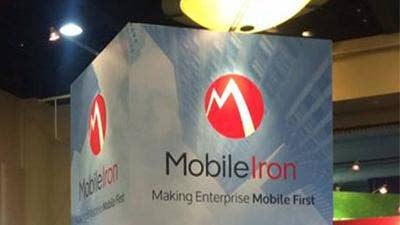
Leader: MobileIron
MobileIron invests heavily in its mobility management offering that focuses on Windows 10 and macOS modern management. MobileIron Threat Defense is a new SKU bundling Zimperium SDK for threat detection capabilities as part of the MobileIron agent to allow real-time detection and remediation. The company supports Microsoft Graph APIs to enforce application protection policies in Office 365 apps. MobileIron Access is designed as an identity proxy to complement MobileIron's mobile device management to provide adaptive access, single sign-on and multifactor authentication. The Mountain View, Calif.-based company ranks No. 5 in both execution and vision on the Magic Quadrant.
Strengths: Gartner said the MobileIron Access customer base is growing as clients use it to enable adaptive access across SaaS and internally hosted applications. Lenovo established a reseller relationship with MobileIron as its preferred solution for Windows laptops.
Weaknesses: As MobileIron expands to manage more device types, the lack of focus on analytics and reporting capabilities limits its ability to extract business insight. The company faces pressure due to the lack of differentiated features in the management of Windows 10 and macOS devices.

Challenger: Ivanti
Ivanti is one of the few vendors in Gartner's Magic Quadrant that offers a full CMT solution as part of its UEM offering. The company was formed in 2017 following the acquisition of Landesk by private equity firm Clearlake Capital. Ivanti has added technology from acquisitions, including Concorde Solutions and RES Software, for asset management and identity and automation to Ivanti UEM. The vendor has combined mobility management and CMT products to provide a single pane of glass for management of endpoints. Ivanti ranks among the middle of the pack in both execution and vision on the Magic Quadrant.
Strengths: Ivanti owns a broad product portfolio, including IT service management, asset management and security, that has been integrated into its UEM offering. Administrators can use a single workflow to deploy an application to PCs and mobile devices.
Weaknesses: The company only offers a limited set of out-of-the-box modern management configurations for Windows 10. Gartner said some buyers are confused by the new branding and don't know of the heritage products inside Ivanti.

Visionary: Citrix Systems
Citrix Endpoint Management, formerly Citrix XenMobile, is a stand-alone UEM offering that customers often buy as a piece of a larger Citrix infrastructure. The vendor offers a suite of containerized mobile applications that can be managed using Endpoint Management or Microsoft's Intune mobile application management controls. Citrix's broader UEM capabilities focus on desktop environments and applications delivered through its client virtualization offering, the Citrix Virtual Desktop. The Fort Lauderdale, Fla.-based vendor ranks among the middle of the pack in both execution and vision on the Magic Quadrant.
Strengths: Citrix can consume mobile, SaaS and virtualized Windows applications through a single app store, which is key for leveraging existing Citrix virtualization technology. The company's containerized applications can be run on an unmanaged device.
Weaknesses: The lack of CMT migration capabilities across all product license tiers relegates the full complement of UEM features to its highest license level and broader Citrix Workspace offering.

Visionary: Sophos
Sophos’ Mobile UEM product integrates with the company's broader line of security products, particularly its endpoint protection platform. Mobile UEM can function as a stand-alone tool deployed on-premises or in cloud environments. Sophos sells the offering mostly to small and midsize businesses, although the product can scale to support 50,000 devices. The Abingdon, U.K.-based company has aggressively pursued innovation in security, using nonsignature detection methods and data loss prevention across server, workstation and mobile devices. Sophos ranks among the middle of the pack in both execution and vision on the Magic Quadrant.
Strengths: Sophos' Mobile console uses configurable tiles to provide a multimodal dashboard for an intuitive and easily navigable user experience. Gartner said Sophos Secure Email is one of the best secure PIM clients for containerized email in the market.
Weaknesses: The company doesn't offer legacy CMT capabilities or tools for migrating clients to UEM from CMT. Sophos does not offer an identity provider as part of its solution and only has a few large enterprise UEM deployments.

Visionary: 42Gears
India-based 42Gears specializes in managing a corporate-owned fleet of devices across multiple platforms and form factors, including wearables and digital signage. Its UEM solution can manage iOS, Android, Windows 10, macOS, Google’Wear OS, Linux and IoT gateway devices, as well as legacy platforms -- demonstrating the depth and diversity of the product. 42Gears’ virtual assistant, DeepThought, aims to simplify administrative tasks and perform self-service tasks for end users. The offering supports screen sharing by iOS users without external third-party dependencies, while administrators can also automate routine management functions to create custom workflows. 42Gears ranks among the middle of the pack in both execution and vision on the Magic Quadrant.
Strengths: 42Gears offers flexible pricing and deployment models, making it attractive to midsize enterprises. The product shares a common code base across on-premises and SaaS deployments, while also providing best-of-breed capabilities on Android such as full support for Android Enterprise.
Weaknesses: 42Gears doesn't support Windows Autopilot and Microsoft Graph APIs to implement app-level controls for Office 365 applications. The company's license structure is complex with separate licenses for its SureLock and SureMDM offerings.
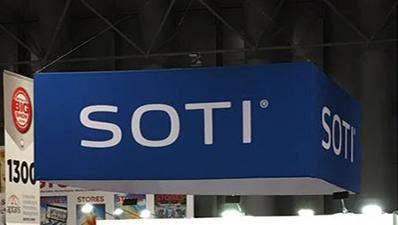
Visionary: SOTI
SOTI has expanded beyond its MobiControl product by adding rapid mobile app development, SOTI Snap, and a help desk offering as part of the SOTI One platform. The company remains strongest in single-purpose or purpose-built device deployments, with a large presence in IoT management. Gartner sees an increased interest in SOTI outside use-case-specific or purpose-built device management at a global scale. Ontario, Canada-based SOTI ranks among the middle of the pack for vision and among the bottom in execution on the Magic Quadrant.
Strengths: SOTI One addresses management, content delivery via mobile apps, and user support that few other vendors can compete with, Gartner said. SOTI is proficient in management of nontraditional devices, such as visibility into operations through MobiControl for IoT devices.
Weaknesses: SOTI's capabilities to manage Android devices and address IoT use cases give the vendor visibility, but its execution rate is low. Gartner said clients have noted a lack of local presence in certain regions or countries such as China.

Niche Player: Matrix42
The Matrix42 Unified Endpoint Management offering combines the vendor's mobility management offering with its client management offering, Empirium, as a single console for UEM. The Germany-based vendor also provides its own identity and access management, software asset management and service desk products alongside its UEM tool. Matrix42 combines UEM and service management that allows for user self-service capabilities including approval workflows and catalog integration. In addition, Matrix42 integrates its Identity-as-a-Service solution, MyWorkspace, and service desk into the UEM offering. Matrix42 ranks among the middle of the pack in both execution and vision on the Magic Quadrant.
Strengths: Matrix42 offers user-based licensing that allows for an unlimited number of devices per user, including PCs and mobile devices. The integration between its UEM and service desk products enables help desk personnel to quickly support device issues.
Weaknesses: The company does not provide its own containerized PIM, relying on an OEM agreement, and has yet to add support for Office 365 app controls. Matrix42 lacks a strong presence in the Americas region.

Niche Player: NationSky
Beijing-based NationSky provides its NQSky UEM product mainly to customers in China, serving key verticals such as government, financial institutions and manufacturing. NQSky UEM integrates with CMTs for Windows 10 to synchronize user and device-level information between the two systems. The company's workspace app, AppNest, containerizes capabilities for instant messaging, email, contacts, file sync and share, and applications. The company also has partnerships with local device manufacturers that extend NationSky's customer reach by bundling management capabilities with enterprise device sales. NationSky ranks among the middle of the pack in execution and among the bottom in vision on the Magic Quadrant.
Strengths: The company partners with China-based device manufacturers that extend its customer reach by bundling management capabilities with enterprise device sales. NationSky has secured critical certifications to keep pace with China's new regulations.
Weaknesses: NQSky UEM does not support Android Enterprise because of the lack of Google Play services in China. The product doesn't support application distribution of internal apps or integrate with Microsoft Store for Business for external apps. NationSky's offering is very market-specific to China.

Niche Player: ManageEngine
ManageEngine, a division of Zoho, offers Desktop Central UEM that provides support for managing macOS, Windows and Linux PCs, along with Android, Apple iOS and Windows mobile devices. Desktop Central is primarily for small and midsize organizations, with the majority of deployments supporting under 500 devices. The product offers an easy-to-navigate interface and a lower price point compared with other UEM vendors that offer traditional Windows management capabilities. ManageEngine ranks among the bottom of the pack in both execution and vision on the Magic Quadrant.
Strengths: The company offers a broad set of operation management tools for customers looking for out-of-the-box integration into other ManageEngine products. ManageEngine offers a free edition of Desktop Central that can be used for up to 50 devices.
Weaknesses: ManageEngine lacks advanced mobility management capabilities including geofencing and time-fencing. Desktop Central doesn't provide advanced UEM administration features, including the ability to assign mobile device management policies across a user's device or to user groups.

Niche Player: Snow Software
The Swedish company offers UEM capabilities primarily through the Snow Device Manager (SDM), but the functionality is spread across an integrated set of products. Snow Software combines device management with self-service functionality around employee on-boarding and off-boarding, hardware life-cycle management, and software license management. SDM integrates with Snow Software's asset management product, the Snow Automation Platform, which enables administrators to present users with a self-service enrollment workflow. SDM, available both on-premises and as a SaaS solution, can manage up to 50,000 devices on a single domain. Snow Software ranks last in both execution and vision on the Magic Quadrant.
Strengths: The self-service workflow streamlines the process of enrolling devices, requesting software subscriptions and renting a cloud-hosted virtual desktop through a single portal. Gartner said customers report high satisfaction with the simplicity of SDM.
Weaknesses: The company has limited support for modern management of Windows 10 and macOS. Gartner said clients report scalability issues, resulting in a lot of manual rework while recovering from a failure in application deployment.